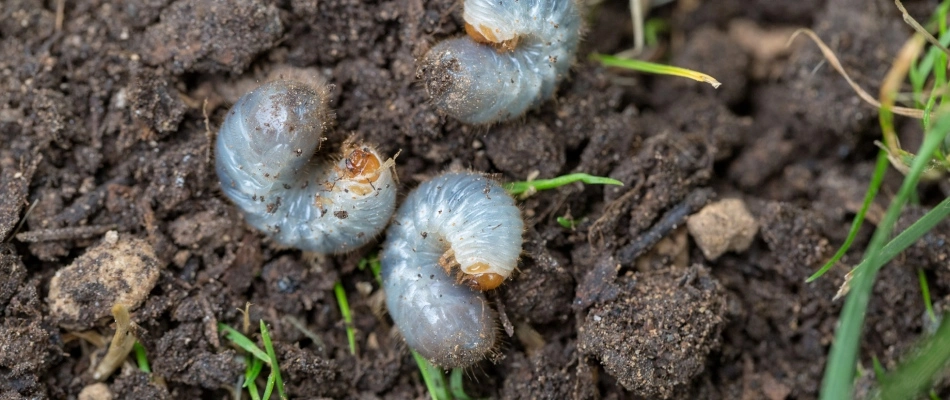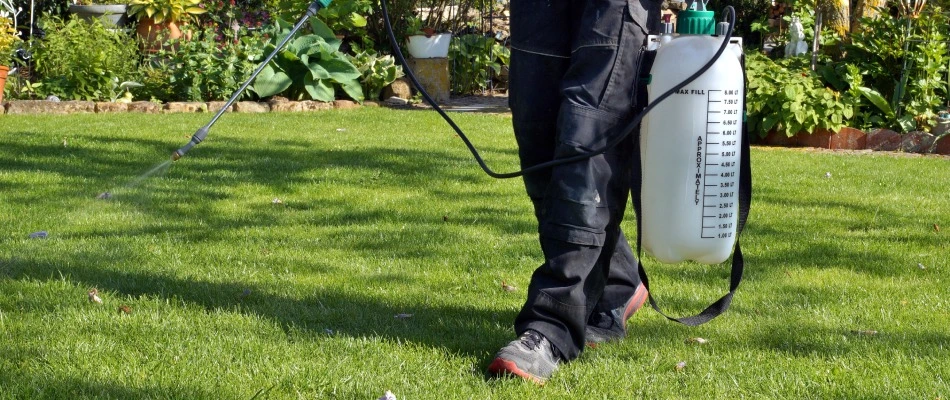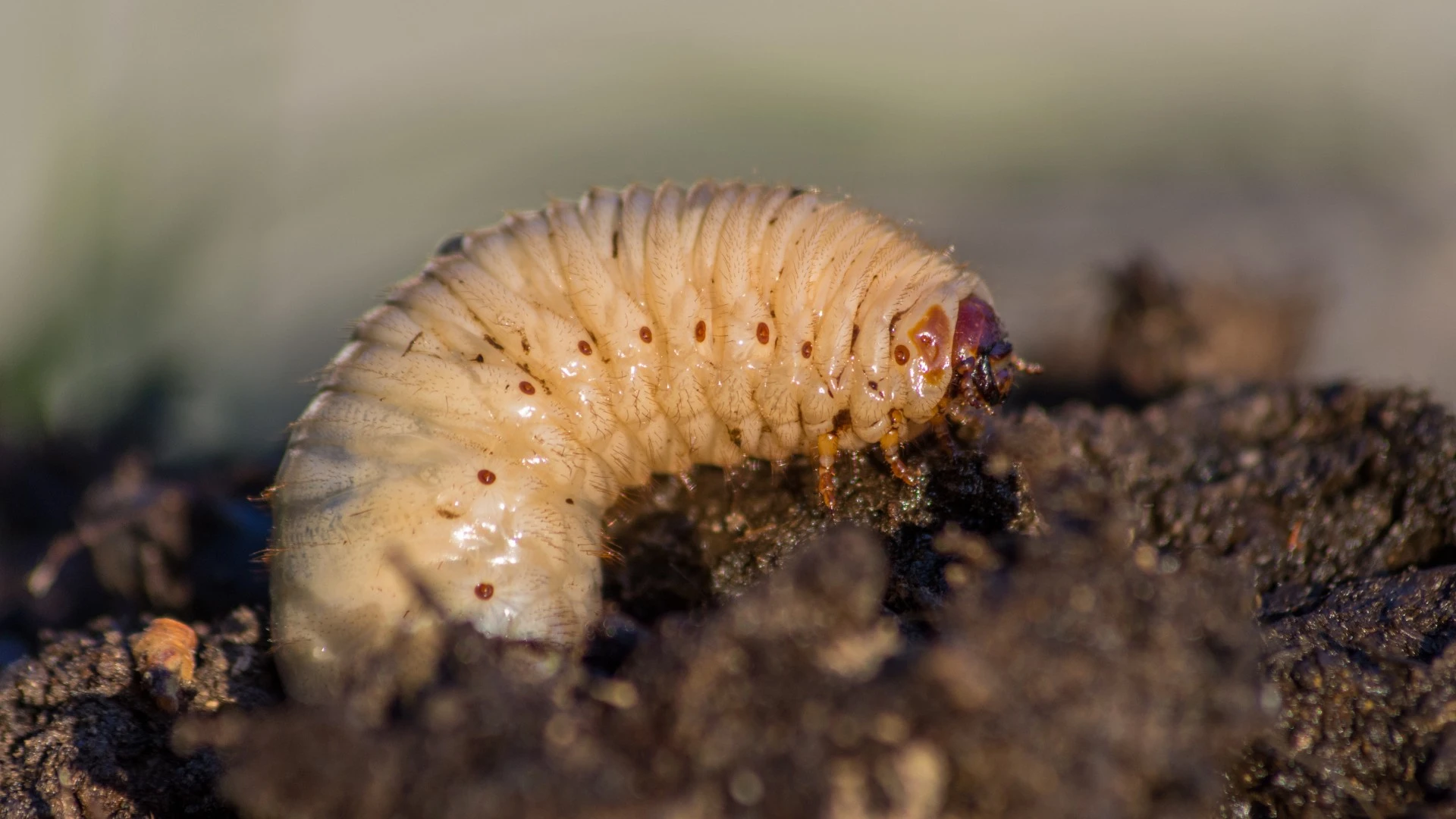Grubs are an issue in Indiana. Each year they have the potential to do damage to your turf if left to their own devices. Because of the damage they can inflict, many people wonder about the optimal time to deal with these pests each year. To answer that question, we need to review their life cycle in more detail. It's important to understand that their eggs hatch in late July because you'll need to apply preventative grub control before the eggs hatch in order for the treatment to be effective. It's also critical to understand that you may still experience a grub infestation this year even if you didn't experience one in any of the prior years.
The Grub Life Cycle

Knowing more about their life cycle will help you understand when you should schedule preventative grub control treatment in Indiana. During their larval stage, they bury deep into your soil to overwinter, eventually pupating and growing during late spring to early summer. Adults will eventually emerge from your soil during early to mid-summer and begin laying eggs. The eggs the adult beetles lay will then hatch in late July, producing small larvae beneath your soil that feed on the roots of your grass. The more they feed, the larger they become, and then they migrate deep down into your soil during the winter, and the whole process begins again.
When should a preventative grub control treatment be applied?
Now that you understand the general life cycle of grubs, we can explain the optimal time to apply a preventative grub control treatment. Another important aspect to note is that preventative grub control targets grub eggs before they hatch or newly hatched larvae. The formula is not designed to work against larger grubs. Knowing this is important because it means the preventative treatment needs to be administered before the eggs hatch in late July. However, you don't want to apply the treatment too early because it will lose a lot of its potency. And applying it too late means it will not reach the roots of your grass in time to work against the small grubs. Therefore, the ideal time to have the treatment administered is between mid-May and the end of July to ensure the product remains effective at just the right time.
Preventative grub control treatments need to be watered in for maximum efficacy.
Annual preventative grub control treatment is integral to maintaining a healthy lawn.

In Indiana, white grubs are an annual issue. Each year, they dig deep into your soil to wreak havoc on your lawn. Even if you didn't experience an infestation last year, it's still possible grubs can damage your lawn this year. It's best to apply preventative grub control treatment before any issues occur because grubs can do tremendous damage to your turf in the summer. If you wait and your lawn becomes infested with grubs, not only would you have to pay for a curative grub control treatment, but you would also have to worry about nursing your lawn back to health during this high-stress period.
Call us today to schedule our preventative grub control treatment!
The best time to schedule preventative grub control is between mid-May through the end of July to target the grubs buried beneath your soil. Even if you didn't experience a grub infestation last year, it's always best to be safe since grubs are a continuous problem here in Indiana. We service commercial, residential, and HOA property owners in Carmel, Fishers, Westfield, and the surrounding areas in Indiana. Give us a call today at 317-965-7868 to schedule our preventative grub control treatment before it’s too late!



Comments (0)
Thanks for your comment!
Thanks for your feedback! Your comments have been successfully submitted! Please note, all comments require admin approval prior to display.
Error submitting comment!
There is a problem with your comment, please see below and try again.